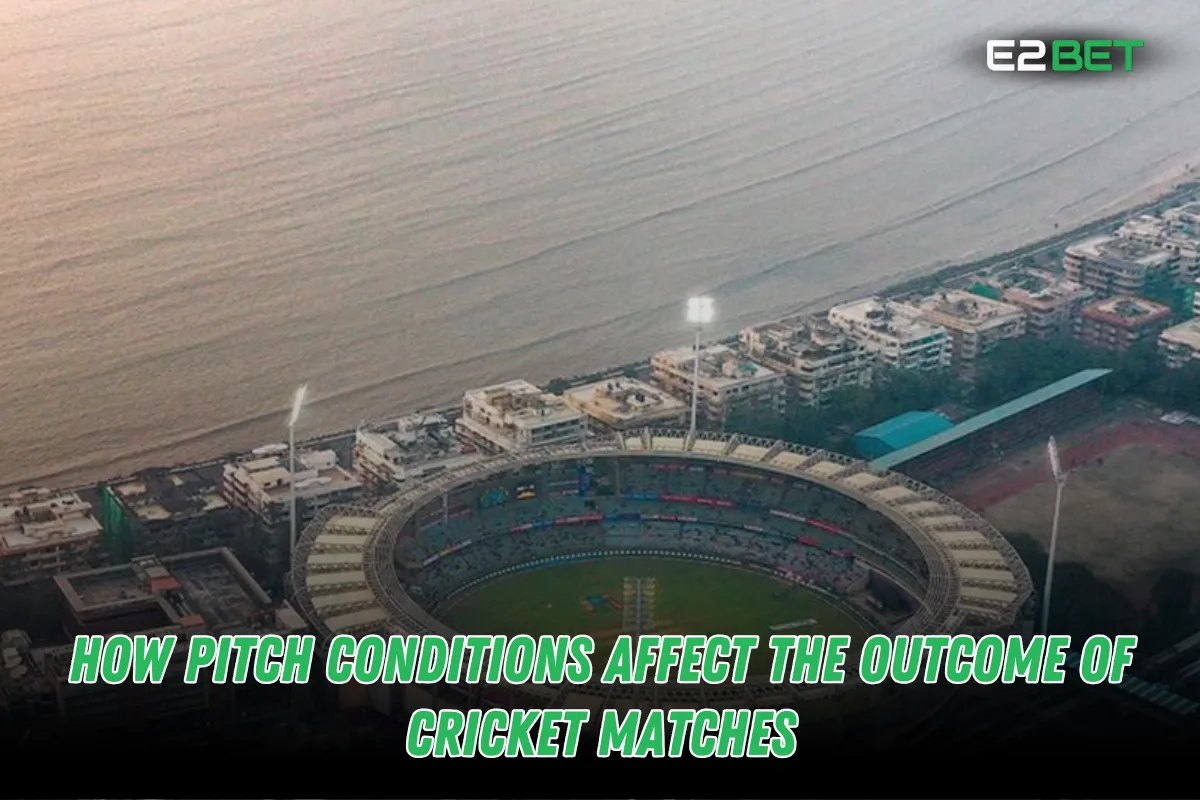When it comes to cricket, the pitch isn’t just a strip of ground; it’s a vital player in the game. From influencing bowling strategies to deciding batting approaches, pitch conditions significantly impact the outcome of cricket matches. Understanding the nuances of cricket pitch behavior is essential for players and teams to strategize effectively. Let’s explore the science and art of cricket pitch dynamics in detail.
What Are Pitch Conditions?
A cricket pitch is a 22-yard strip where most of the action unfolds. But it’s not just soil and grass—pitch conditions encompass moisture, grass cover, and surface hardness. These factors define whether the pitch will favor pace bowlers, spinners, or batsmen. For example, a green pitch often assists fast bowlers, while dusty pitches are a spinner’s paradise.
Types of Cricket Pitches
Flat Pitches
Flat pitches are batting-friendly and offer minimal assistance to bowlers. These surfaces are common in high-scoring games, where batsmen dominate with ease.
Green Pitches
Green pitches have a significant grass cover, aiding pace and swing bowlers. They’re a challenge for batsmen due to the extra movement off the pitch.
Dusty Pitches
These are prevalent in the subcontinent and are known for assisting spinners. Dusty pitches crack as the game progresses, providing more turn for spin bowlers.
Dead Pitches
Dead pitches lack any assistance for bowlers. They have low bounce and pace, making them ideal for batsmen to build long innings.

How Pitch Conditions Are Prepared
Curators play a crucial role in preparing pitches. Factors like soil type, grass length, and moisture levels are carefully controlled. Weather conditions also influence pitch preparation. For instance, dry and sunny weather can lead to cracks, making the pitch spinner-friendly, while rain or humidity keeps the surface damp, favoring bowlers who rely on movement.
The Role of Weather in Pitch Behavior
Sunny Conditions
In sunny conditions, pitches dry out quickly, leading to cracks and rough patches. This often benefits spinners as the match progresses.
Overcast Conditions
Cloudy weather enhances swing bowling, as the ball tends to move more in the air. Green pitches under such conditions become a fast bowler’s delight.
Humidity
High humidity can retain moisture in the pitch, making it conducive for seam bowlers early in the game.
How Pitch Conditions Favor Different Styles of Bowling
Pace Bowlers
Fast bowlers thrive on green pitches with extra bounce and seam movement. These surfaces reward speed and accuracy.
Spin Bowlers
Spinners shine on dusty pitches that offer grip and turn. As the pitch deteriorates over days, spinners become increasingly effective.
Swing Bowlers
Swing bowlers excel in overcast conditions, especially on pitches with some grass cover. The ball’s movement in the air makes life tough for batsmen.
Impact of Pitch Conditions on Batting
Batting on flat pitches can feel like a dream, as the ball comes onto the bat smoothly. However, facing deliveries on a green pitch can test a batsman’s technique and patience. Dusty pitches require batsmen to adapt to variable bounce and turn.
Home Advantage in Cricket
Home teams often use pitch conditions to their advantage. For instance, subcontinent teams prefer spin-friendly dusty pitches, while teams like England favor green tops for seamers. This home advantage has led to some iconic wins in cricket history.
How Pitch Conditions Change Over a Match
In Test cricket, pitch conditions evolve significantly over five days. While Day 1 pitches usually favor batsmen, the surface deteriorates as the game progresses. By Day 4 or 5, cracks and rough patches make it a bowler’s playground, especially for spinners.
Famous Matches Influenced by Pitch Conditions
- India vs. Australia, Chennai 2001: A turning track where spinners dominated.
- England vs. South Africa, Lord’s 2012: Swing bowling dictated terms.
- West Indies vs. Pakistan, 1987: A green pitch led to low scores and thrilling cricket.
How Teams Strategize Based on Pitch Conditions
Teams carefully analyze pitch reports to decide whether to bat or bowl first. They also select their playing XI based on expected conditions, opting for spinners, pacers, or all-rounders to exploit the pitch.
Misreading the Pitch: Costly Mistakes in Cricket
Poor assessment of pitch conditions has cost many teams dearly. Misjudging whether a pitch will favor spinners or pacers can lead to tactical blunders and unexpected defeats.
Conclusion
Pitch conditions are the silent game-changers in cricket, influencing every delivery and every shot. From green tops to dusty turners, adapting to pitch behavior is crucial for success. By understanding and leveraging pitch conditions, teams can enhance their chances of winning in this dynamic sport.
FAQs
Q1. What is the most challenging pitch type for batsmen?
Ans. Green pitches, as they offer significant movement for bowlers.
Q2. How do weather conditions influence pitch behavior?
Ans. Sunny weather dries out pitches, while overcast skies aid swing bowlers.
Q3. Can curators prepare pitches to suit specific teams?
Ans. Yes, home teams often work with curators to prepare pitches that favor their strengths.
Q4. What tools do experts use to analyze pitches?
Ans. Moisture meters, visual inspections, and experience help experts gauge pitch behavior.
Q5. How do pitch conditions affect T20 matches differently?
Ans. T20 matches typically feature flat pitches to encourage high-scoring games.